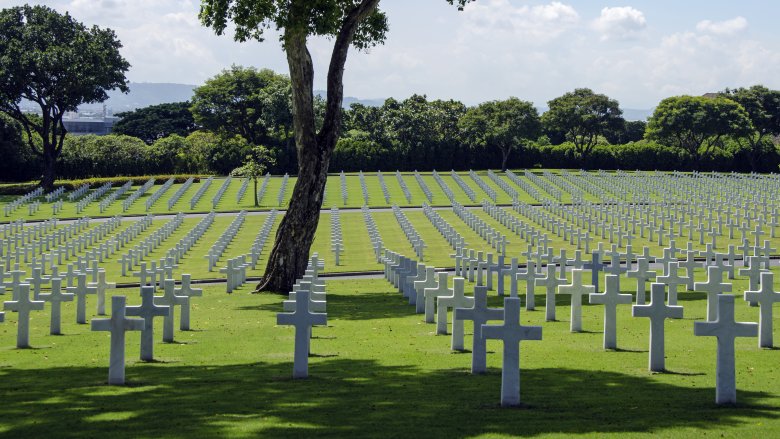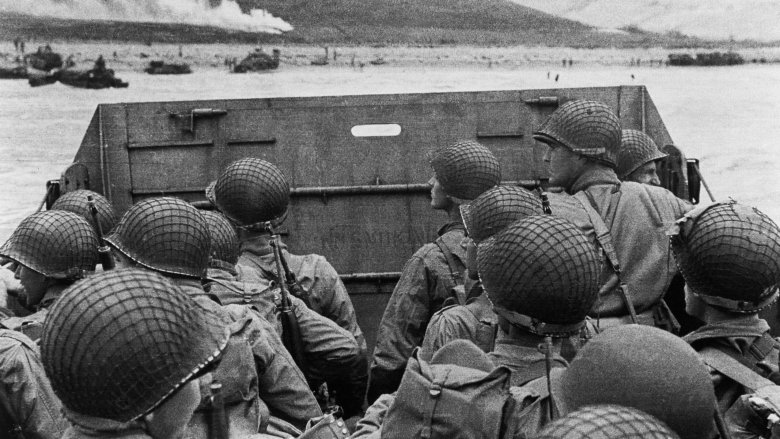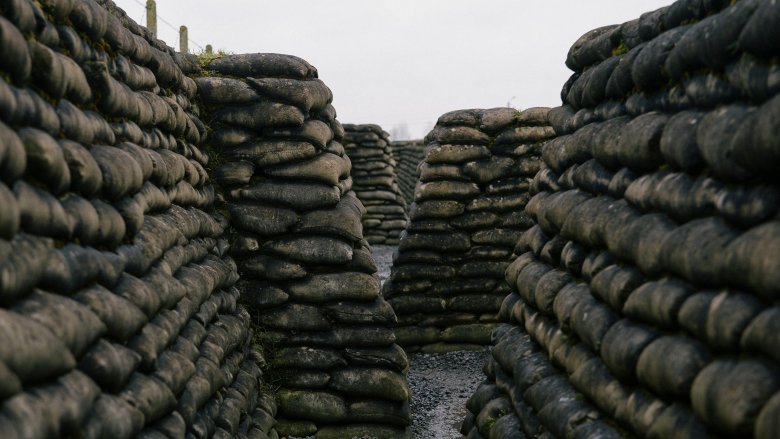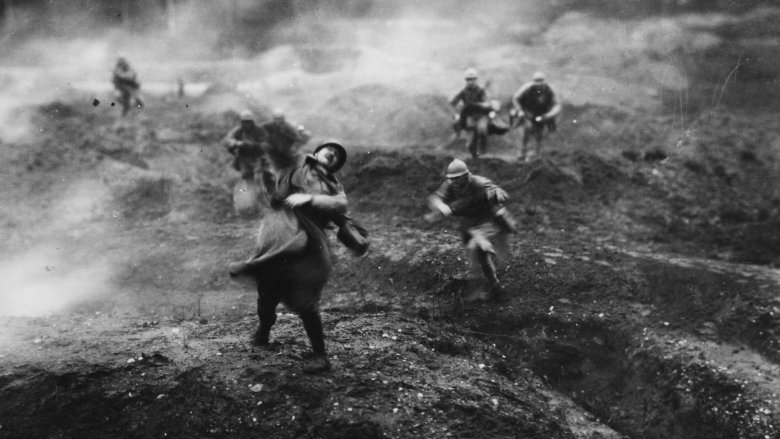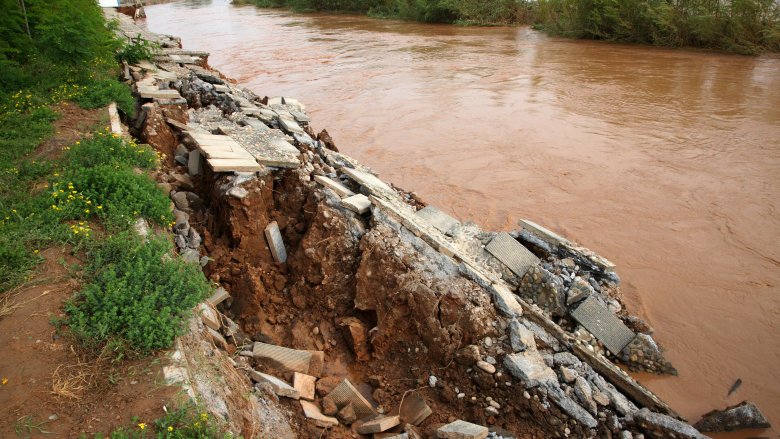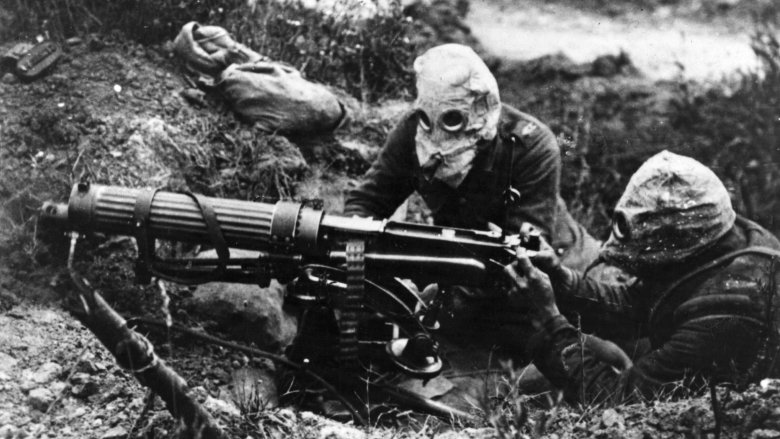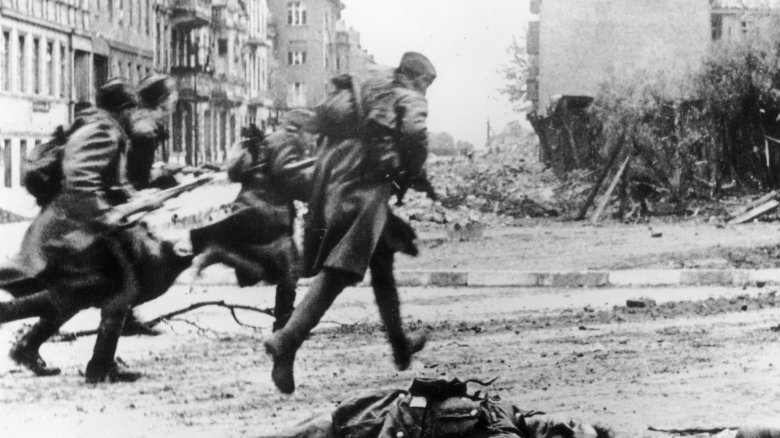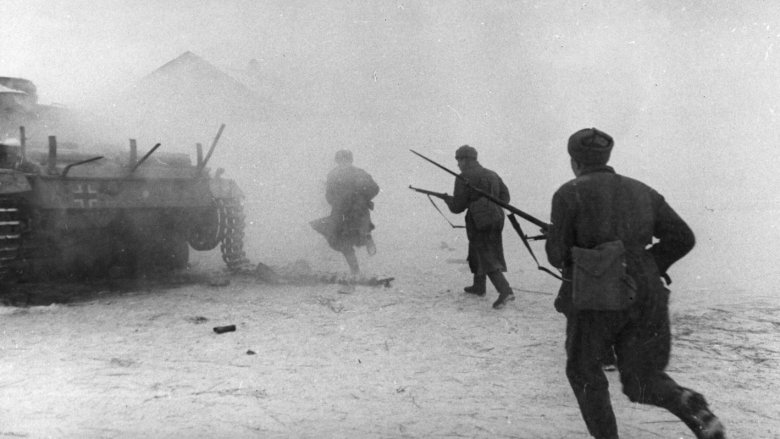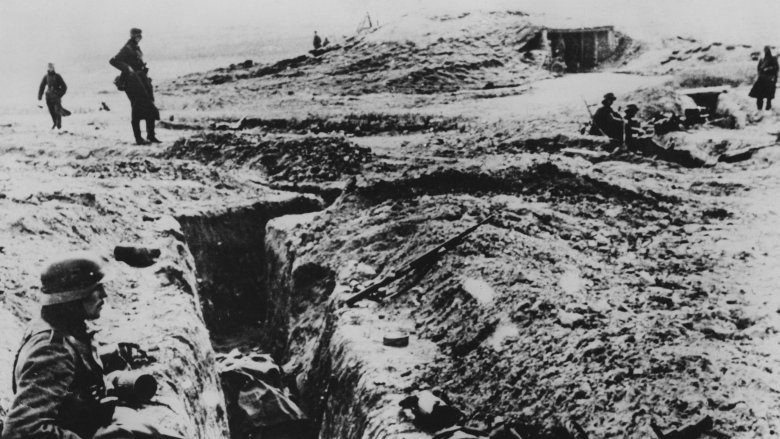The Deadliest Battles In The History Of The World
War has existed, in some form or another, for about as long as humans have walked the Earth. It doesn't matter who you were — whether you were an early human stalking the Serengeti, a Roman senator at the height of the Empire, a peasant in feudal China, a colonist in early America — simply put, unless you're very, very lucky, you're going to be familiar with conflict.
Over the last century or so, however, mankind has truly excelled in the pursuit of death and destruction. The battles that have defined our more recent wars have been drawn out, vast, and devastating to soldiers, civilians, and the environment alike. These are the deadliest clashes in the history of the world — battles in which the death tolls reach the high hundreds of thousands, if not the millions — and every single one of them comes since the beginning of the 20th century. There are more people around to kill, plus people really have gotten good at all this killing.
Evil's last stand
By 1945, World War II was beginning to wrap up. In the European theater, that meant a push for Berlin and the surrender of Nazi Germany's highest-ranking soldiers and officials. In the Pacific, however, it meant a vicious struggle against an increasingly defiant and desperate enemy. In early 1945, American and Filipino forces besieged Manila, the capital of the Philippines. The Japanese defenders numbered around 17,000. The Americans dedicated 35,000 troops to the operation, supported by a few thousand Filipino guerillas.
In the month it took for Allied soldiers to finally capture the city, the Japanese successfully enacted a scorched earth policy that resulted in the murder of at least 100,000 civilians (via Rappler) — but potentially as many as 240,000. Incredibly, however, the Americans only lost 1,010 soldiers over the course of the battle — one of the lowest casualty ratios the United States Army has ever experienced. More than 16,600 of the Japanese defenders were also killed during the battle, or nearly every soldier in the fight.
Overlord's reach
The Battle of Normandy is one of the most famous military operations of all time. In just over a month, the armies of the Allies landed in northern France, established a beachhead, and eventually captured and dominated the region of Normandy. It was the basis for the liberation of western Europe. Freedom for France, however, came at a price.
According to D-Day Revisited, roughly 425,000 Allied and German combatants were killed or wounded during the Battle of Normandy, split about evenly between the two sides. An unknown number of French civilians were also killed during the fighting, mostly as a result of Allied bombing campaigns, but the figure is likely somewhere between 15,000 and 20,000. All in all, Operation Overlord took about half a million lives as the cost for a foothold in France. Considering the importance of the campaign, though — and the extraordinarily high death tolls endured during other significant battles in the same war — that figure still seems like something of a lucky break for the Allies.
Drowning in the mud
The Third Battle of Ypres, better known as the Battle of Passchendaele, was one of the bloodiest battles to occur on the Western Front in World War I. For almost three years, the Allies had failed to make any kind of significant progress against the enemy in France. Despite this, Field Marshal Sir Douglas Haig was convinced that the German forces were on the brink of total collapse, and that one drastic Allied victory would be enough to win the war. On July 31, 1917, he ordered an attack that would last more than three months.
Nine British divisions and six French divisions advanced on the German lines near the village of Passchendaele in Belgium. After a few early victories, the onset of rain began to slow the Allied advance to less than a crawl. The village itself was captured on November 6, 1917, reports History. The British Army took 310,000 casualties, the Germans, 260,000. Many of these men drowned in the mud created by the turbulent weather. Tragically, the battle had virtually no tactical impact whatsoever.
Bleeding France dry
Just eight months prior to the beginning of the Third Battle of Ypres, another battle — this one even longer and more ferocious — finally came to an end. It had begun when German general, Erich von Falkenhayn, decided that, in order to cripple Britain's war machine, the French Army had to be defeated, says Britannica. To achieve this goal he would make a focused attack at one point on the French lines, "for the retention of which the French would be compelled to throw in every man they have." He wanted to bleed the Allies into submission.
The decision was taken to launch this attack on the fortresses surrounding the Verdun region in northeastern France. On February 21, 1916, the German Army launched its first attack on the French lines. Early German successes inevitably turned into a stalemate between the two sides, and, by the end of the year, the French had managed to retake much of their lost territory, thanks in large to a diversionary attack launched by the British at the Somme. Over the 10-month span of the Battle of Verdun, the two sides combined for some 300,000 dead and some 400,000 wounded, notes History.
The drowned fields of China
By 1938, things weren't looking good for the Chinese Army. The Empire of Japan had invaded China the year before, making stunning tactical gains and inflicting a slew of atrocities against Chinese POWs and civilians alike. To finish off the war quickly, the Japanese intended to strike the city of Zhengzhou. To do that, however, they had to cross the Yellow River. The Chinese Army managed to slow down the invaders by destroying a railway bridge near Zhengzhou itself, but its leaders were well aware that their position was untenable.
In the end, they decided to commit the unthinkable — and break the dikes of the Yellow River in a desperate attempt to halt the Japanese advance, writes Disaster History. To keep the move a surprise, the civilian populace were given little warning. On June 9, the dikes were broken, and the waters of the Yellow River flooded into the surrounding region. The Japanese were stopped in their tracks, giving the Chinese government the opportunity to relocate its capital to Chongqing and put off the end of the war by several months. The region itself, however, largely made up of farms and tilled land, was almost entirely flooded. Countless villages were destroyed, 800,000 people were killed, and nearly 4 million were displaced.
The British Army's darkest day
In 1916, the British Army spearheaded a major offensive along the river Somme, largely as an attempt to pull German forces away from their assault on Verdun. Commanding the attack was Sir Douglas Haig. The battle began with an Allied bombardment of the German lines that lasted seven days. Over 100,000 men then climbed over the top of their trenches and advanced toward the enemy. The Germans, who had taken minimal losses under artillery fire, held their positions, armed with machine guns and rifles. More than 19,200 British soldiers died on the first day alone.
Haig pressed the attack. Substantial gains in the midst of the battle, achieved thanks to the British adoption of the creeping artillery barrage as an offensive tactic, were soon negated by poor weather. By the end of the 141-day battle, the British had advanced only 7 miles. The British suffered around 420,000 casualties, the French lost about 200,000, and the Germans lost somewhere around 450,000, notes History. In total, there were well over a million casualties during the battle.
The destruction of the Third Reich
The Battle of Berlin marked the end of Adolf Hitler's so-called "thousand-year Reich." To the west, the Allies — led by the Americans and British — were rapidly approaching the city. In the east, however, the Soviets aimed to capture Berlin first. Around 300,000 German troops defended the city, reports the BBC, spurred into a frenzied defense by their fear of Russian vengeance. In April 1945, the Soviets fired over a million shells into German positions near the River Oder. Gen. Georgy Zukhov, one of the Soviet Army's leaders, attempted to achieve a swift capture of the city by sending in wave after wave of his own men in an attempt to overwhelm the Germans. This took three days.
On April 30, Hitler killed himself in his bunker, along with his mistress and most of Nazi Germany's highest-ranking officials. The Reichstag fell on May 2. According to British Pathé, a total of 1,298,745 people died or were wounded before Berlin fell. They were some of the final casualties of World War II in Europe.
The Great War's final push
The Hundred Days Offensive — optimistically known as the "Advance to Victory" — was a major operation on the Western Front of World War I, which sought to deprive the German forces of the gains they'd acquired in 1918's Spring Offensive, notes the International Encyclopedia of the First World War. On September 26, 1918, American troops launched an attack in the Meuse-Argonne region, followed the next day by a British attack toward Cambrai and an offensive deep in Flanders the day after that. On September 29, the main assault would take place — a British and French attack on the Hindenburg Line.
The offensive was a major success. German reserves and resources were stretched across the entire front, and the Supreme Command was woefully unprepared to defend against the rapid nature of the Allied attacks. By the evening of September 28, the German Quartermaster-General Erich von Ludendorff had informed his superior, Paul von Hindenburg, that Germany must sue for peace or risk annihilation. The Armistice was signed on November 11. Allied casualties during the Hundred Days Offensive amounted to around 700,000. The Germans lost somewhere around 760,000, but the total figure could be higher.
The struggle for Stalingrad
The Battle of Stalingrad is one of the most notorious sieges of all time. For almost seven months, an army of beleaguered and battered Russian defenders held out against the full force of the Third Reich. It was arguably the most important battle of the entire war, says Britannica.
Adolf Hitler's plan in 1942 was to use Stalingrad as a stepping stone from which to take Moscow and complete his invasion of Russia. Stalin, in response, issued Order No. 227, declaring that the defenders of Stalingrad would take "not one step back" and refusing the evacuation of the city's civilians as an incentive for his soldiers to fight harder. By September 1942, the Germans had almost captured the entire city, and the Soviets — who were quite literally on the edge of defeat — were forced into fighting house-to-house in some of the most intense and vicious combat of the war.
A surprise offensive by the Soviets in November soon turned the battle in their favor, however. The onset of winter proved damaging to the German forces, as did Hitler's refusal to order a retreat from the River Volga, and soon the city's attackers were beaten back and surrounded. Roughly 91,000 German troops finally surrendered to the Soviets on February 2. It's difficult to know just how many died as a result of the Battle of Stalingrad, but the Axis are believed to have lost over 800,000 men. The Soviets suffered 1.1 million casualties, as well as another 40,000 civilians on top of that.
History's deadliest siege
The German siege of Leningrad lasted a staggering 827 days, from September 1941 to January 1944. The city (now known as St. Petersburg) was of critical symbolic, tactical, and industrial importance to each side, drawing a massive joint German-Finnish offensive force, as well as a sea of defenses and barricades set up by the Soviets. The Germans soon found themselves unable to take Leningrad by sheer force and instead chose to starve the city out via a protracted siege. Despite some successful attempts to evacuate the civilian population, many remained inside the city. Starvation became widespread within the Soviet defenses, and a few may have resorted to cannibalism to survive, says ThoughtCo.
Relief didn't arrive until 1944, with the beginning of the Leningrad-Novgorod Strategic Offensive. The incoming Soviet forces overwhelmed the Germans and drove them away from the city. Over 1 million Soviet troops were killed or captured during the battle, and almost 2.5 million were wounded. The total number of civilian deaths may be anywhere between 670,000 and 1.5 million. The Germans lost nearly 580,000 men. The Battle of Leningrad was by far the costliest engagement in human history.

